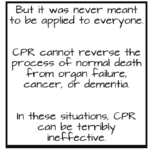Revolutionary Skin Test: A New Frontier in Parkinson’s Disease Detection

A groundbreaking skin test has emerged as a potential game-changer in the early detection of Parkinson's disease and related disorders. This article explores the science behind the test, its accuracy, and the ethical implications of early diagnosis. Discover how this innovative approach could revolutionize Parkinson's treatment and patient care.
Managing Disappearing Clothing in Dementia Care: Tips and Strategies

Explore practical solutions for managing disappearing clothing in dementia care. Learn about iron-on name labels, simplified clothing choices, and the importance of family-facility collaboration. This guide offers practical tips to ensure your loved one with dementia always has the right clothes, reducing stress for patients and caregivers.
Hospice Best Practices for the Management Lymphedema

Lymphedema is a chronic condition that affects millions of people worldwide, especially those who have undergone cancer treatment or have other lymphatic disorders. It occurs when the lymphatic system, which drains excess fluid and waste from the tissues, is damaged or blocked. The most common symptom of lymphedema is swelling of the affected limb, which can range from mild to severe. Lymphedema can have a significant impact on the quality of life of patients with serious illnesses, such as cancer, heart failure, or chronic kidney disease. In this article, we will discuss hospice best practices for the management of lymphedema, with a focus on the needs and preferences of terminally ill patients, family members, and caregivers.
Hospice Nursing Visits in the Last Two Weeks vs. Last Six Months of Life

Navigating the intricate path of hospice care involves a nuanced understanding of the unique needs of terminally ill patients. The frequency and nature of nursing visits are crucial in ensuring optimal comfort and support during the final stages of life. This article will delve into the variations in hospice nursing visits, explicitly comparing the last two weeks to the preceding six months.
Finding the Best Products for Loved Ones with Dementia

Dementia affects memory, thinking, and behavior, presenting challenges for patients and caregivers. This article discusses the best products for managing these challenges, enhancing quality of life for those with dementia.
Mastering Dementia Care: A Deep Dive into the Dementia Care Essentials Book Series

Explore the Dementia Care Essentials book series, a comprehensive collection of nine guides addressing vital aspects of dementia care. From managing hallucinations to optimizing nutrition, these books provide invaluable insights for caregivers, healthcare professionals, and families navigating the challenges of dementia
Adrenal Insufficiency Crisis Management for Terminally Ill Patients

Discover essential strategies for managing adrenal insufficiency crises in terminally ill patients. Learn about symptoms, risk factors, and crucial interventions to ensure patient comfort and safety. This guide provides valuable insights for hospice nurses and caregivers in this critical condition.
Enhancing Hospice and Palliative Care with the GUIDE Model: A Comprehensive Approach

Discover how the GUIDE model can be applied in hospice and palliative care, offering improved support for dementia patients and their caregivers. Learn best practices and implementation strategies.
Training and Certifying Medication Technicians in Pennsylvania

This article aims to overview Pennsylvania medication technicians' training and certification process and discuss specific skills and knowledge needed to perform their duties effectively and safely.
Understanding the Prognosis of Six Months or Less: A Guide for Hospice Families

Navigating the prognosis of six months or less for hospice care can be daunting. Learn how to understand, prepare for, and make the most of this crucial time.
Understanding the Similarities between Dementia and Autism Spectrum Disorders

Discover the commonalities between dementia and autism spectrum disorders (ASD), crucial for caregivers navigating symptoms. Access support resources for comprehensive care.
Traumatic Brain Injury: A Guide for Family Members and Caregivers

Discover essential insights and practical advice for family members and caregivers of individuals with traumatic brain injury, focusing on understanding, supporting, and managing challenges effectively.
Senility vs. Dementia: What You Need to Know

Do you worry about a loved one's memory issues or odd behavior? Learn the key differences between senility and dementia, their symptoms, causes, and ways to manage or prevent them. Understanding these conditions can help you offer better support and care for those affected.
Five Most Common Types of Dementia

Dementia encompasses various brain disorders affecting memory, thinking, and behavior. This comprehensive guide delves into the five most common types: Alzheimer's, Vascular, Mixed, Lewy Body, and Frontotemporal Dementia. Gain insights into their distinct symptoms, underlying causes, diagnostic methods, and tailored care approaches to support individuals and caregivers navigating these challenging conditions.
Alcoholic Cirrhosis of the Liver with Ascites: A Guide for Families

Discover crucial information about alcoholic cirrhosis of the liver with ascites in this comprehensive guide for caregivers and family members. Learn about symptoms, diagnosis, treatment options, and practical tips for providing care. Understand what to expect in the terminal stage and find resources for emotional support during this challenging journey.
Full Code vs DNR: The Implications for Terminally Ill Patients and Their Caregivers

Choosing between full code and DNR for terminally ill patients can be challenging. This article explains the differences, benefits, and drawbacks of helping caregivers and families make informed decisions.
